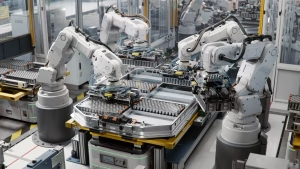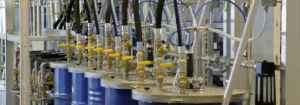One important factor that comes up when we explore the intriguing world of industrial air motors is torque. The rotating force that powers equipment, moves cars forward, and raises big objects is known as torque. The fundamental ideas of air motor torque, its real-world applications, and its importance will all be covered in this essay.
What is Torque?
Fundamentally, torque is the effort required to twist a shaft or rotor. Torque is applied when you peddle a bicycle or turn a tool. Torque, as it relates to air motors, is the force that rotates the motor’s output shaft.
Let’s dissect the essential elements:
- Working Pressure: The torque of the motor is greatly influenced by the pressure of the compressed air supplied to it. More torque is produced at higher pressures.
- Vane Design: Usually, vanes, or blades, are used in air motors to sweep across chambers. Torque generation is influenced by these vanes’ size, shape, and arrangement.
- Rotor Eccentricity: The rotor’s off-center rotation causes it to rotate, resulting in different chamber diameters. The torque produced is affected by this eccentricity.
- Internal Leakage: Air motors are not a flawless system. No system is. The motor experiences some leakage, which reduces overall efficiency. Effective vanese sealing reduces this leakage.
Torque Calculation
The formula for calculating torque in an air motor involves three main factors:
- Pressure (P): working pressure (expressed in psi or bar). Increasing pressure directly boosts torque.
- Displacement (D): This refers to the volume swept by the vanes per revolution. Larger displacement means more air is moved, resulting in higher torque.
- Efficiency (η): Efficiency accounts for internal losses due to leakage and friction. A well-sealed motor has higher efficiency. The torque formula is:
- Torque (τ) = Pressure (P) × Displacement (D) × Efficiency (η)
Practical Implications
Understanding torque has real-world implications for air motor applications:
- Load Handling: Torque determines how much weight an air motor can move. Whether lifting heavy objects or driving machinery, sufficient torque is essential.
- Speed-Torque Relationship: As the load increases, the motor’s speed decreases, but torque rises. Air motors maintain relatively constant torque across a wide speed range.
- Adjustability: By varying the working pressure, operators can fine-tune torque. Need more torque? Just increase the pressure.
- Overload Resilience: Unlike electric motors, air motors can be stalled indefinitely without damage. This feature suits intermittent or heavy-duty applications.
- Direction Reversal: Air motors efficiently operate in both directions, enhancing versatility.
- Safety: Spark-free operation makes air motors safe for hazardous environments.
- Compactness: Air motors offer impressive torque-to-size ratios, making them ideal for tight spaces.
Calculating the power of an air motor involves considering factors such as air pressure, flow rate, efficiency, and mechanical output. Here’s a simplified formula to calculate the power output of an air motor:
[ \text{Power (W)} = \text{Torque (Nm)} \times \text{Angular Speed (rad/s)} ]
Where:
- Power is measured in watts (W).
- Torque is the twisting force produced by the motor, measured in Newton-meters (Nm).
- Angular speed is the rotational speed of the motor, measured in radians per second (rad/s).
Air Motors with High Starting Torque:
Among air motors, piston-type motors tend to provide the highest starting torque. Radial piston air motors, in particular, are known for their high starting torque capabilities due to the arrangement of multiple pistons around a central shaft.
RPM of an Air Motor:
The RPM (revolutions per minute) of an air motor depends on various factors, including the design of the motor, operating pressure, load conditions, and control settings. Different air motors may have different RPM ranges depending on their intended applications and performance characteristics.
Torque in AC Motors:
In an AC motor, torque refers to the twisting force produced by the motor’s rotating shaft. It is the measure of the motor’s ability to overcome resistance and generate rotational motion. Torque in AC motors can vary depending on factors such as motor design, operating conditions, and load characteristics. AC motors are commonly used in various applications, including industrial machinery, appliances, and HVAC systems, where they provide the necessary mechanical power to drive equipment and devices.
Application Example
Imagine an assembly line where an air motor drives a conveyor belt. The torque generated determines how much weight the motor can move. By adjusting the working pressure, engineers can precisely match the torque requirements to the load. It’s a delicate balance between power and efficiency.
Next time you encounter an air motor, remember that behind its smooth rotation lies the science of torque. From manufacturing to aerospace, torque plays a pivotal role. So, the next time you tighten a bolt or lift a heavy box, appreciate the invisible force that makes it all possible—the torque of air motors.
For further insights and detailed technical information, consult the Pocket Guide to Air Motors by Atlas Copco or Contact us directly.


